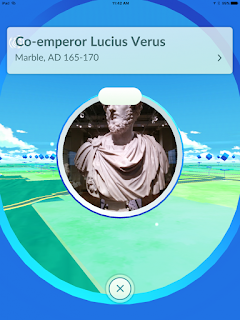MUSEUM INNOVATIONS
BY: CASSY KIST
BY: CASSY KIST
I began my day by reading an interesting article about the National Museum of Video Games in Texas and of course, sipping a hot cup of coffee. My interest in this article may have been spurred by the impending stress of upcoming assignments for the new semester and consequently a longing to escape into the world of video games.
That being said, I had a brief virtual escape to the Video Game Museum which displays everything from old Pacman games to a giant game of Pong.
National Video Game Museum. Source.
The
museum which opened just this past April is laid out in stages allowing visitors to progress from exhibits such as a timeline of consoles, to an 80’s
Arcade and finally to some of Nintendo’s first “prehistoric” creations. The museum
also offers educational programs which provide interactive tutorials in the
areas of science, technology and engineering for kids and adults. Another interesting, interactive feature of this museum is that the old arcade systems are made available for visitors to play! Wicked.
 |
| National Video Game Museum Arcade. Source |
This brings me to a third feature of the National Video Game
Museum and that is its promotion of Pokémon Go. The Museum advocates playing it
through social media and has even held a Lure party in July. The adoption of
this innovative, geographically sensitive game seems natural on the part of the
Video Game Museum, as it not only fits their collection theme but will no doubt
become ingrained in their history. However, how do other Museums whose
objectives and themes differ from the Video Game Museum cope with the impact of
Pokemon Go? The mission of museums initially seems mismatched with the use of Pokemon
Go - a distracting technology that puts its users in what I like to call the
Hunched Zombie texting position.
 |
| Photo Courtesy of New York Times Post: The Texting Dead |
Museums are being creative in approaching the Pokemon Go phenomenon. For instance, the Royal Ontario Museum offers an
online tour of Pokemon Go in the exhibits and reminds players of the historical significance
of artefacts where Pokestops are located. For example, the Leading Content Producer
Sarah Elliot informs players that this bust:
 |
| Photo Courtesy of Royal Ontario Museum Blog |
 |
| Photo Courtesy of SI Instagram |
The Smithsonian Institute on the other hand has used many references to Pokémon Go in their blogs, Instagram and Facebook, to similarly help Pokémon Go players relate to objects and visit the museum. On the Smithsonian Instagram the accession of a new 1989 Gameboy is captioned with the label “Before Pokemon Go there was the 1989 Nintendo Gameboy...This one is now in our @amhistorymuseum"(Source).
Another Blog post by the Ocean Blog compares favourite Pokemon to the specimen in the museum, another innovative way to use the prevailing Pokemon Go fever to draw interest into an educational experience.
 |
| Photo courtesy of SI Ocean Blog |
However, a disgruntled Facebook comment in response to this blog
post suggested that the Smithsonian draw back the adults to the real world and
focus on Smithsonian issues. This embellishes the fine line that museum professionals
must balance in using new innovative technology to provide education for all
ages and interests.
What do you think? Is Pokemon Go an avenue for education in
museums? Or is it an innovation that ultimately takes away and distracts from
the museum exhibits?




No comments:
Post a Comment
Note: only a member of this blog may post a comment.